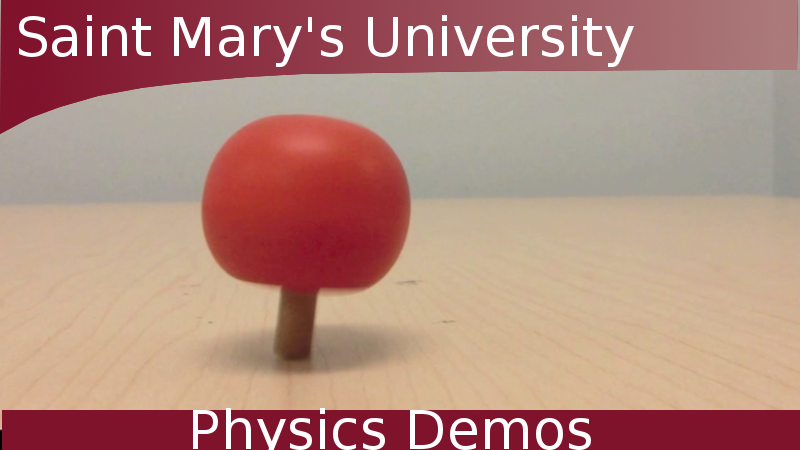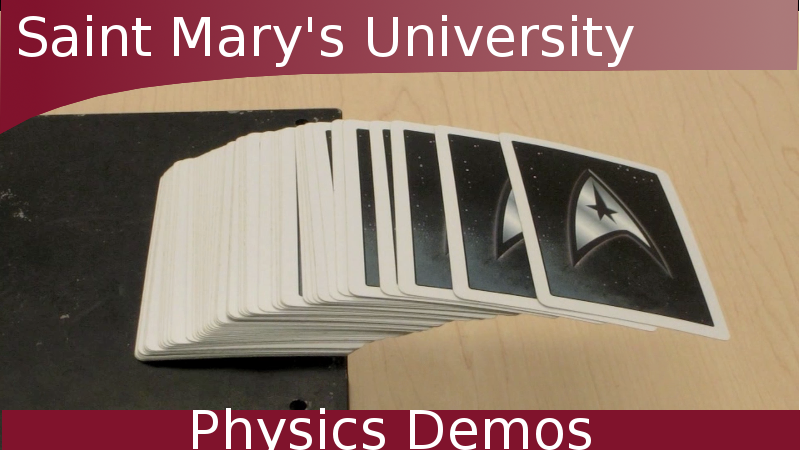Objects will always rotate about its centre of mass.
Watch The Video:
Teachable Topics:
- rotational motion
- centre of mass
- centre of rotation
Theory:
An object that is free to rotate (not confined to any axle or pivot point) will always rotate about the centre of mass if there is no net force on it.

The location of the centre of mass for a system of N particles in one dimension is given by:

where M is the total mass of the system, xi is the distance to each particle in the system (from the origin), and mi is each particle’s mass.
Likewise, the location of the centre of mass can be determined in the same manner for two-dimensional systems:


The centre of mass of an object can be found by averaging over the location of all the particles making up the object and weighting them by their mass.
Since it is unrealistic to average over every particle of an object, we can simplify by dividing the object into segments of equal masses ∆m and averaging over these instead.


The centre of mass is a mass-weighted average of the positions of the particles or mass segments in an object. When an object rotates freely, the centre of mass remains stationary while all other particles in the object rotate around the centre of mass.
Apparatus:
- air table & air supply
- triangle, square, circle air pucks
- smaller masses to add to the larger ones
Procedure:
- turn on the air table
- place one of the larger shapes on the table and ensure it is free to move across the surface with minimal friction
- gently push the shape from the side of the table, giving it as much spin as you can muster
- place additional small masses not he larger shapes to shift the centre of mass.
Tip: We recommend you practice this demo before you try to show it to anyone. It can take a few tries before you figure out the necessary speed required to spin the apparatus.






